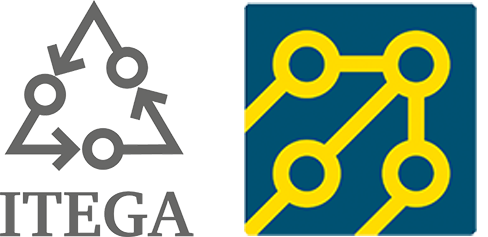Are Audience Profile Books and the Information Trust Exchange marketplace like a railroad switchyard?

Railroad switchyard (Lehman Hill)
In a railroad switch yard trains come in from all over the place and box cars of goods are switched around and made up to different trains and then go on their way. Imagine in our digital world that a “boxcar” represents a database containing links to users with a set of common addressable demographics or interests — the Audience Profile book.
Imagine each boxcar’s contents is thousands — even millions — of little boxes and each box has an address on it — but the address is in code. The railroad doesn’t know exactly who the box is going to, the address provides just enough to know where to send it. Kind of like a box with just a postal code or “zip” code, but no name. But what each individual box DOES have is some readible information about the sort of person it belongs to, or their interests or attributes.
Now in the current environment, each shipper (advertiser) is trying to make up their own box cars and then address them. But they don’t all have scale to do that well, and the way they define their segments varies widely. So the result is waste — messages delivered to the wrong targets at the wrong time, with no independent third-party verification. Like a package inside the boxcar that has the wrong address on it, or inaccurate attributes.
The ITE ecosystem will have at least one, and eventually a plurality, of railroad switchyards where demographic boxcars are assembled from diverse sources. There is a convening authority, the Information Trust Exchange Governing Association (ITEGA), which helps define the segment attributes so a boxcar of, say, auto-intenders in one railroad switchyard has the same features as auto-intenders in each of the other switchyards.
Advertiser requests come into each of the switchyards for particular boxcars. Since we are operating in a virtual world here, boxcars are infinitely replicatable, so the nice thing is the boxcars can be very easily sorted and advertising messages channeled to the anonymously segmented “users” inside. The advertiser does NOT need to know who the users are, specifically, just that the right boxcar was addressed.
The Information Trust Exchange Governing Association (ITEGA) can operate in a way like Underwriters Laboratories or like the Alliance of Audited Media to ensure, as a trusted third party, that the railroads play by the rules in delivering and logging advertising messages.
In this scenario, no advertiser or their agency has to know who is in the boxcar they just have to know their message was to to the right boxcar at the right time.
You might also think of this as a little like FedEx in Memphis or United Parcel Service in Lexington, Ky. (their national air hubs). All the pilots of each plane have to know is that the packages they depart with at predawn are all going to the same city/region — they don’t care about individual packages (as long as they aren’t flammable!)
ENABLING PAYMENTS
There’s one vitally important thing here, however, and that is the system has to be designed so that it makes it POSSIBLE for ITE itself to differentiate individual users. It doesn’t need to know them by name, but it needs to know them by a unique alpha-numeric identifier.
Here’s why:
Individual publishers whose users are inside a given box car are going to want to get “credit” for their user seeing an ad. So the ITEGA is going to have to run a system for sorting all of that — a microaccounting system. But that can be done without the advertiser/agency having to know anything about the individuals.
The other reason enabling payments is important us is because we know publishers are going to need to have other revenue streams besides advertising. So this system can also be designed to enable direct payments from users (subscriptions/per click), among other ideas, as an eventual option.
SHORTLINK: http://wp.me/p70QMe-42
